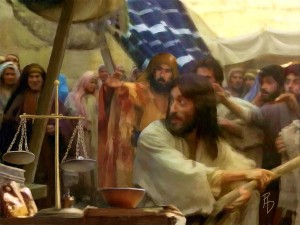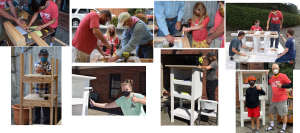 “Glory to you for oceans and lakes, for rivers and streams.
“Glory to you for oceans and lakes, for rivers and streams.
Honor to you for cloud and rain, for dew and snow.
Praise to you for the Duwamish and Cedar and the glaciers that feed them;
for Longfellow and Fauntleroy Creeks, and the waters of the Salish Sea.
Your waters are below us, around us, above us: our life is born in you.
You are the fountain of resurrection.”
– Thanksgiving for Baptism
Beloved of God,
Rivers are on my mind these days. And one river in particular: the Duwamish. After reading BJ Cummings’ book: THE RIVER THAT MADE SEATTLE: A Human and Natural History of the Duwamish, my eyes have been opened to the rich and tortured history of the Duwamish watershed and the people through time who have made it their home. During the first three Sundays of this month we’ll be focusing our attention on the Duwamish and other watersheds and creatures that inhabit them, seeking to make connections to our faith lives during our SEASON OF CREATION: RIVERS. And we’ll do so with the aid of special guests like watershed theologian John Rosenberg, author and river advocate BJ Cummings, and Duwamish Tribal leader and Superfund manager James Rasmussen. We’ll go on a walking tour (June 12) along the Duwamish; we’ll visit Paulina Lopez of the Duwamish River Cleanup Coalition and learn about ongoing efforts to revitalize both the river and the communities that live adjacent to it. Some of us will ply the river in kayaks and canoes!
The Duwamish, the Snoqualmie, the Skykomish, the Green, White, Black, Cedar and Tolt—these rivers have been ferrying fish, feeding fauna, and shaping the Westside landscape for many thousands of years. The names themselves remind us that Native Communities had to come to terms with their seasonal behavior over thousands of years before new immigrants started calling this region home. The great rivers of this land not only return the rain and snow back to the sea, they are life-bringing highways, concentrating and distributing nutrients, feeding wildlife, irrigating crops, transporting fish, and shaping the landscape; they are the sources of the fresh water upon which all life—including our own—a depends.
In our short-sighted zeal to master rivers for human industry we have turned vital streams of life into noxious streams of death. Industrial wastes, pesticides, fertilizers, prescription medications, leaking oil and sewage run off each contribute toxic ingredients to the mix, polluting the very marine estuaries that enable complex and complimentary life forms to thrive. Earthkeeping calls us to a renewed understanding of our relationship to the rivers and waters of our region, and it all starts in our own backyard. What is your relationship with the rivers and watersheds in the place you live? This is what we’ll be exploring with the help of special guests over the first three weeks in June.
“Rivers,” says James Rasmussen, “are living things.” The stories they tell are complex. Our lives of faith are also complex, and too often have been lived at a remove from the natural world around us. To be a living thing, faith must meet the challenge of the time in which it is lived. Linkages must be made between our sacred traditions and the natural processes of the living planet we call HOME. This is the great work of faith to which we are being called in our time.
Plenty has gone wrong with the Duwamish over the past 165+ years, culminating in the river becoming a Superfund cleanup site in 2001. But as Eric Wagner points out, while the Duwamish may be a dirty river, a ransacked, violated and neglected river, it is not a dead river. In his book, ONCE AND FUTURE RIVER: RECLAIMING THE DUWAMISH, Wagner writes:
“There is abundant loss and disconnection to be found. Yet every time I settle into a kayak or wading boots and push off and away from the city’s hard ground, into the flow of the Duwamish River, it feels like belonging… To see the evidence of injurious human choices that have been made during the past hundred years is to wonder what whose people were thinking and whether we are much different. But to accept the evidence that wildlife and plants and people are at home on the river these days is to allow ourselves wonderment… In its present state, [the Duwamish] embodies the tensions between man-made and natural, between competing visions for the future, between dying and living.” [1]
I hope you’ll join us each week for this series—and tell a friend, too.
With you, on the Way,
Pastor Erik
[1] Essay by Eric Wagner (University of Washington Press, 2016) https://www.seattletimes.com/pacific-nw-magazine/reclaiming-the-duwamish-river-is-about-reclaiming-ourselves-theres-a-lot-left-to-save/






